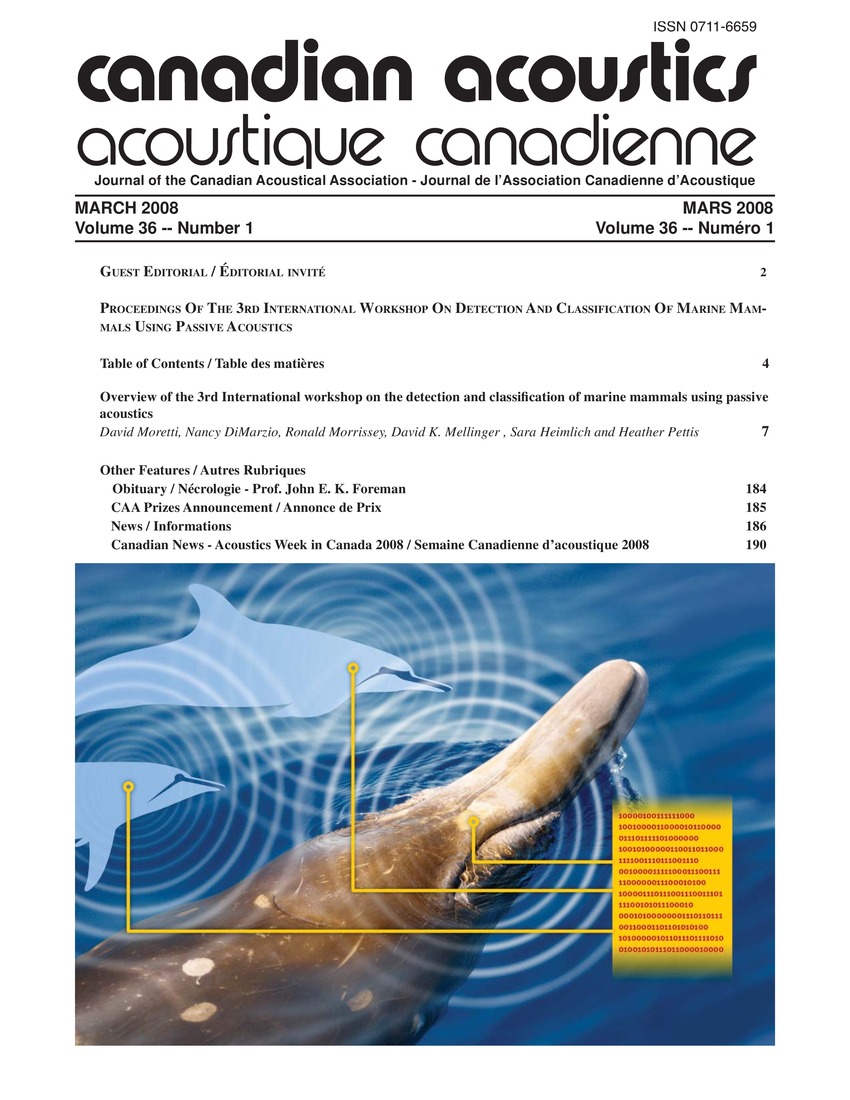Detection and localization of blue and fin whales from large-aperture autonomous hydrophone arrays: A case study from the St. Lawrence estuary
Keywords:
Architectural acoustics, Associative storage, Data processing, Fins (heat exchange), Pneumatic drives, Pulse amplitude modulation, Ships, Hydrophone arrays, Infrasounds, Large aperturesAbstract
The feasibility of using passive acoustic methods (PAM) to monitor time-space distribution of fin and blue whales in the Saguenay-St. Lawrence Marine Park was explored using large-aperture sparse hydrophone arrays. The arrays were deployed during summers 2003 to 2005 at the head of the 300-m deep Laurentian Channel. They were composed of 5 AURAL autonomous hydrophones moored at mid-water depths, near the summer sound channel. A small coastal array complemented the deployment in 2003. The apertures were from 20 to 40 km and the configurations were changed from year to year. The most frequent calls recorded were blue and fin whale signature infrasounds. Noise from transiting ships on the busy St. Lawrence Seaway often masked the calls on the nearest hydrophones. Sometimes this resulted in an insufficient number of receivers for localizing the whales using time difference of arrival (TDoA) methods. The technical characteristics of the arrays and data processing are presented, with an example of call detection and localization. Despite the difficulties inherent to this environment, PAM can be effectively implemented there, eventually for real-time operations.Additional Files
Published
How to Cite
Issue
Section
License
Author Licensing Addendum
This Licensing Addendum ("Addendum") is entered into between the undersigned Author(s) and Canadian Acoustics journal published by the Canadian Acoustical Association (hereinafter referred to as the "Publisher"). The Author(s) and the Publisher agree as follows:
-
Retained Rights: The Author(s) retain(s) the following rights:
- The right to reproduce, distribute, and publicly display the Work on the Author's personal website or the website of the Author's institution.
- The right to use the Work in the Author's teaching activities and presentations.
- The right to include the Work in a compilation for the Author's personal use, not for sale.
-
Grant of License: The Author(s) grant(s) to the Publisher a worldwide exclusive license to publish, reproduce, distribute, and display the Work in Canadian Acoustics and any other formats and media deemed appropriate by the Publisher.
-
Attribution: The Publisher agrees to include proper attribution to the Author(s) in all publications and reproductions of the Work.
-
No Conflict: This Addendum is intended to be in harmony with, and not in conflict with, the terms and conditions of the original agreement entered into between the Author(s) and the Publisher.
-
Copyright Clause: Copyright on articles is held by the Author(s). The corresponding Author has the right to grant on behalf of all Authors and does grant on behalf of all Authors, a worldwide exclusive license to the Publisher and its licensees in perpetuity, in all forms, formats, and media (whether known now or created in the future), including but not limited to the rights to publish, reproduce, distribute, display, store, translate, create adaptations, reprints, include within collections, and create summaries, extracts, and/or abstracts of the Contribution.


